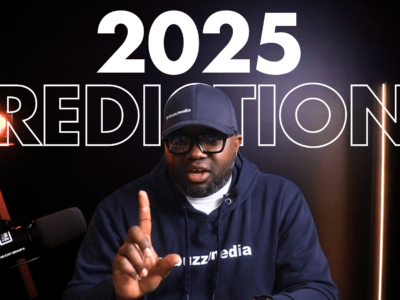The solar industry has a potentially fatal flaw: its reliance on silver. Silver is costly and difficult to come by as a precious metal, yet critical to almost every solar panel. Worldwide solar capacity has officially crossed into terawatt territory, and silver is putting that continued growth at risk.
There is an alternative. Copper-based panels have broken world efficiency records, and there are some promising prospects, but panel manufacturers are hesitant to dump silver for copper.
Why?
The answer lies down a long, winding road. It’s a story of how timing and money can make or break an innovation, even if it’s already proven to work. And it’s another example of how lots of resources don’t guarantee lots of success.
Can the solar industry prevail over copper resistance and bring us cheaper and better solar panels?
If you’re anything like me, you might be a fan of solar panels for energy security and saving money on your electric bill.
In fact, a lot of you have asked me for help around getting solar panels for your home, so I’ve been putting something together to help with that … but I’ll get to that later.
For solar technology to continue flourishing, it needs to offer increased efficiency at a lower cost. At the same time, it needs to do this sustainably. Researchers already know one way to solve some of these challenges (with some impressive efficiency), but it’s not as clear-cut as you might think.
There’s some very exciting prospects for copper, but switching from silver to copper needs a little bit of context.
Since the ‘70s, screen printing has remained the old standby when producing silicon solar cells. It’s simple, effective, and by far the most popular kind of fabrication, accounting for about 85% to 90% of silicon solar cells.
Just like the screen printing that applies logos on your T-shirts, the process begins by placing a screen on the back of a silicon wafer. Machinery coats the screen with a silver paste, then pulls a squeegee across it to push the paste through. The wafer is dried, fired, then flipped over to repeat these steps on the other side.
While screen printing is well-known and cheap to do, the ingredients are causing a problem. Silver accounts for about 10% of photovoltaics’ manufacturing cost and is using about 15% of the world’s mined silver. And as solar has grown, the world’s hunger for silver has grown, too. Many growing technologies are competing for silver, like 5G infrastructure, EVs, and all of the other consumer electronics flooding the market.
Researchers like Pierre Verlinden have been ringing the alarm bell on this issue for a while now: as far back as 2013.1 Verlinden is the former chief scientist of Trina Solar and has over 40 years’ experience as a photovoltaics researcher. In a November 2022 pv magazine webinar he noted, “It took 70 years to deploy the first Terawatt. It will just take three years to install the next one.”8 He’s also said that sustainability in the solar industry keeps him awake at night, and that silver use must be substantially reduced or replaced with copper.98
The rapid, hockey stick growth of solar and silver demand brings us to the money part of the problem. While solar has been getting cheaper, silver has been getting more expensive … and fast. The Silver Institute reports that in 2021, silver had its highest recorded global demand since 2015, and the year-over-year price rose by 22%, resulting in a nine-year high of $25.14 per troy ounce. For comparison, copper’s 2021 price was about $0.29 per troy ounce.1210
And yes, I know some of you are thinking, “silver can be recycled.” However, according to a December 2022 study, recovering silver from solar panels isn’t a viable option yet because there aren’t enough to decommission. So in a way, solar panels’ long lifespan is a good and bad thing. Besides, the recycling process is labor intensive, as the panels must be disassembled and then treated chemically to remove the silver. Ultimately, recycling will be helpful in the long term, but won’t be viable for another few decades.
That brings us back to copper. It has a comparable conductivity but is hundreds of times more abundant and hundreds of times less expensive. There are two basic paths toward switching to copper:
1) using a copper paste in place of silver paste for screen printing, or
2) replacing the screen printing method with a buried contact solar cell design.
The benefits of switching to copper range from world record solar panel efficiencies to much cheaper and abundant materials. There’s a few companies making exciting moves over the past couple of years, (which I’ll get to in a bit) but there’s always a catch. So, what’s the problem?
Copper is kind of like silver’s maligned younger sibling. In this family rivalry, it needs to compete with or exceed the performance of silver to prove itself…And solar researchers have been trying to make this happen for decades. Get ready for some twists and turns here. The timeline begins with two Australian pioneers from the University of New South Wales, the late Stuart Wenham and his mentor, Martin Green. Over the course of Wenham and Green’s careers, their many contributions to the advancement of photovoltaics have been so impactful, colleagues called Wenham “the Einstein of solar” and Green the “solar Superman.”
Definitely a unique pop culture duo.
In 1985, Wenham and Green filed their patent for buried contact solar cells.
Let’s outline some basic solar panel anatomy to understand what they improved.
You’ve probably noticed the grid-like pattern on the front of solar panels. The lines of the grid are the top contacts, and that’s where you’ll almost always find silver. Those metal wires collect the electricity generated by a cell. The thinner horizontal lines are “fingers.” These carry current to the thicker vertical lines known as “busbars.”19 In a perfect world, photovoltaic fingers would always be tightly packed together and as narrow as possible. Unfortunately, it costs a pretty penny to produce skinny fingers. As a result, one major pitfall of screen printing’s wider fingers is a 10% to 15% power output reduction caused by shading losses.15
The beauty of buried contacts is having fingers that are deeper than they are wide. A laser cuts grooves into the silicon, which are then filled with copper. This means there’s more metal in the finger and less metal obscuring the surface, which drops the shading losses down to 2% to 3%. In the end, buried contact solar panels can be as much as 25% more efficient than screen printed ones.1518 Something I think we’d all want to see in the solar panels on our homes and buildings.
By 1991, Wenham and Green’s buried contacts had achieved a record 24.7% efficiency for experimental cells and 20% efficiency for commercial cells. That’s back when we were all doing the Hammer dance. The design even powered the winning car in the 1990 World Solar Challenge, an annual solar-powered vehicle race through the Australian Outback.20
Safe to say, the arrival of buried contacts in the solar panel game was a big deal. So why aren’t they everywhere now? To answer that question, we’ll have to introduce our next key player, Shi Zhengrong. Shi earned a nickname for his influence on the solar industry, too: the “Sun King”21… which sounds like a character meant to be played by Dwayne Johnson. His rise began when he went on to study as a Ph.D. student under Wenham at the University of New South Wales.22
After graduating from UNSW with his doctoral degree in electrical engineering, he founded Suntech Power in 2001. Wenham acted as the company’s chief technology officer. Suntech would soon grow into one of the world’s largest solar cell manufacturers…and Shi would become one of the world’s first “solar billionaires.”
Suntech went public in 2005. It was actually the first Chinese company to list on the New York Stock Exchange.2324 Over time, Shi went on to receive a flurry of accolades.
In 2009, Suntech rolled out its “Pluto” line of solar panels, which featured copper contacts. Three years later, in March 2012, the company’s copper-metallized cells achieved a world record efficiency of 20.3%. But by the following March, Suntech … was bankrupt.
Suntech wasn’t the only company selling copper-based panels that had failed, and somewhat eerily, another planetary naming scheme shared a similar fate. BP Solar’s own take on laser-grooved buried contact cells was its “Saturn” modules, which arrived in 1992. The company produced Saturn panels until 2009. Two years later, BP Solar shut down.2326
So if copper is so great, why did both companies go out of business? A big part of it was costs. Silver solar panels were much cheaper to make. I mentioned how cheap copper is compared to silver as a raw material, but what about copper contacts that didn’t stick?
Well…it was the copper. Getting copper to stick to solar panels is difficult, so poor contact adhesion has stumped scientists and scared industrialists. Solar panels must last 25 years and beyond in various climates and in all sorts of weather. Copper’s tendency to peel may reduce the reliability of cells plated with it, so it’s not hard to imagine why manufacturers would be nervous about making the switch.49
Another serious concern is performance. Sure, narrower fingers in copper cells mean less shading and higher efficiency, but if copper diffuses into the silicon below, the solar panel will experience performance losses. Copper diffusion turns parts of the semiconducting silicon into a conductor, shorting out sections of the panel.
In general, the potential for copper diffusion introduces additional risk, which isn’t something you want for a product meant to last for decades. Creating barriers against diffusion is tricky and adds an extra layer of expense in production. Plus, there’s concerns about how oxidation limits copper’s ability to conduct current.
Engineering ways around these problems means adding more steps to the manufacturing process and spending more money, which is one of the main reasons copper hasn’t gained traction and BP and Suntech failed. Arguably, BP Solar successfully commercialized its Saturns — in fact, a 2014 study revealed that a group of panels was still kicking 12 years after their initial deployment with no signs of failure. Researchers couldn’t 100% confirm that the panels hadn’t suffered any copper diffusion, but the data indicates that they were just as durable as their silver counterparts.
Despite this, BP had stopped production when its buried contact design couldn’t compete with the lower cost of screen printing silver, which had only gotten cheaper as it evolved. As for Suntech, the company hit a wall when faced with shoddy contact adhesion, but it might have been able to overcome that setback…if it had the money.
This pattern of failure isn’t limited to buried contacts, either. Remember when I mentioned the possibility of swapping the silver in screen printing paste with copper?
Back in 2014, the Rochester, New York-based company Intrinsiq Materials received a federal grant to investigate the use of printed nickel and copper inks in place of silver paste as part of the U.S. Department of Energy’s SunShot Initiative, which aimed to reduce the cost of solar tech.
The copper ink ended up demonstrating “outstanding adhesion” according to the research team, but it never reached the commercial stage. Would-be customers bristled at the costs that piled on with each new step in production, leading Intrinsiq to conclude in a 2017 report that “the simplicity of the silver fire through process makes it a very difficult process to replace.”
The question is, can we hold out any hope for copper, especially now that the stakes are higher than ever? Shi seems to think so. Just two years after Suntech sank into bankruptcy, he was the first to invest in the newly founded startup SunDrive.
Based in Sydney, the company specializes in…you guessed it…copper panels. SunDrive’s CEO and co-founder, Vince Allen, is none other than a former Ph.D. candidate at the University of New South Wales. Things come full circle here. You could say that Shi was uniquely poised to support SunDrive as both an UNSW alum and someone with industry experience.
Previously, Allen had been researching copper metallization under the mentorship of Martin Green and his Ph.D. supervisor, Alison Lennon. Lennon is a UNSW professor and preeminent solar scholar who authored several of the studies that went into the research for this video.
In his eagerness to speed up his project, Allen dropped out of his doctoral program to experiment inside his garage on his own time. That’s dedication. After hundreds of attempts, he eventually managed to devise a method of adhering copper to solar cells in thin, densely packed fingers. He then co-founded SunDrive with his roommate and patented the tech in 2015.
Fast forward to September 2021, and SunDrive’s panel efficiency of 25.54% broke the world record for commercial silicon solar cells.
In December of that same year, SunDrive produced its first full-sized panel. By September 2022, the company’s panel efficiency jumped by nearly a full percentage point to 26.41%, and Lennon had joined the company as chief scientist.3435 And another familiar figure is now on SunDrive’s advisory board: Verlinden.32
SunDrive’s record-breaking efficiency stands out as an exciting milestone. If — and this is a big if — the company can land the leap between the lab and mass production, then its copper tech would be compelling evidence for the feasibility of scrapping silver. With any luck, that would also mean considerably lower prices for consumers. SunDrive is prioritizing the residential sector, and Allen explained during an interview with the Australian Renewable Energy Agency that small efficiency increases can have “a cascading effect in terms of the final cost” of solar panels.
It’s too early to predict whether history will repeat itself and send copper to the wayside again, but if Shi’s investment in the company is any indication, SunDrive might be the ray of sunshine the industry needs. It doesn’t seem we’ll have to wait too long to find out: The company plans to have a pilot production line established by mid-2023.34 But even if Allen doesn’t end up with his own cool nickname, SunDrive is far from the only company working to dig us out of the silver ditch. Over in Germany there’s the Fraunhofer Institute for Solar Energy Systems ISE, Europe’s largest solar research facility. It’s forged its own copper electroplating process as well, which spun off as its own company, PV2+, in 2022.37 The goal is to establish a pilot program early this year.7
As for copper pastes, there’s Bert Thin Films.
In 2015, University of Louisville engineering professor Thad Druffel co-founded the startup with former postdoctoral research associate Ruvini Dharmadasa. The team has since created a recipe for nanoparticle ink called “CuBert.” No … not that Q*bert. That’s “Cu” for copper, and “Bert” to honor the memory of Albert, the Druffel family cat that passed away the same day the company was incorporated.38
In a video published by the Department of Energy last May, Druffel says that CuBert can directly substitute for silver paste without any changes to production tools or a negative effect on the panel’s warranty. The implications would be huge if the paste can live up to these claims. CuBert is still in its testing phase, and there’s not much publicly available information about it.
However, an abstract for the IEEE 48th Photovoltaic Specialists Conference held in June 2021 hints at its progress. Bert Thin said that CuBert’s 19.4% efficiency shows that the challenges of copper oxidation and diffusion “have been overcome.”
The jury is still out on that, so we’ll have to wait and see.
All of these efforts can provide a source of optimism in the face of a rapidly worsening problem. Having said that, copper-based panels’ history of grappling with issues like oxidation and diffusion might mean that this still isn’t the be-all and end-all solution. Maybe the threat of skyrocketing silver prices will be what finally forces the hand of manufacturers.














Comments